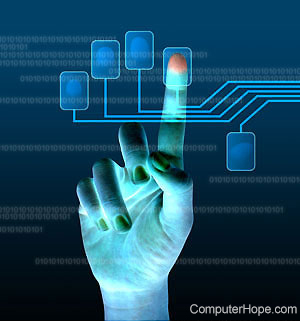Access control system
Updated: 07/02/2020 by Computer Hope

An access control system, or ACS, is any system designed to restrict user access to a computer system according to predefined rules. For example, on most computer systems, users must enter a valid name and password to log in to the system. And, after they log in, those users are allowed to view, create, and modify only some files and directories in the file system.
Access control enables multiple users to access a single system, maintaining the privacy and security of each user's files. It also protects the critical system files from being altered or tampered with, reducing the likelihood that the operating system will malfunction.
Examples of access control systems
- Password - A word or set of letters, numbers, and symbols.
- Access card - Size of a credit card, with a magnetic strip or computer chip, swiped through or placed next to a card reader.
- Security fob - A device with a RF (radio frequency) security chip inside, placed next to security fob reader.
- Fingerprint reader - Scans a person's fingerprint, which is different for each person.
- Palm reader - Scans the palm of a person's hand, which is unique for each person.
- Voice recognition - Usually requires a person to say their name, a specific sentence or series of words, to recognize the person's unique voice pattern.
- Retina scan - A scan of the eye, specifically the retina, which is unique for each person.
- DNA scan - Much more sophisticated and futuristic, requiring sample of saliva or blood to check for and verify the person's DNA (deoxyribonucleic acid).
Biometrics, Computer acronyms, Fingerprint reader, Password, Security, Security terms, Voice recognition
